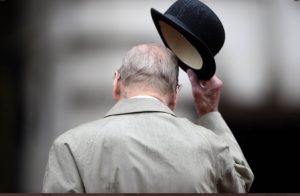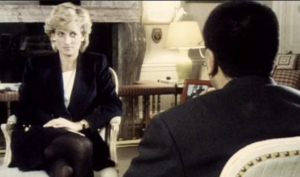London – Twenty-five years after Princess Diana’s death, many still believe the conspiracy theory that she was murdered.
The car crash that killed him at the age of 36 in 1997 in the Pont de l’Alma tunnel in Paris on August 31, 1997 was not just an accident, but the result of a conspiracy.
Among the main suspects pointed to by the theory may be members of the British royal family, who were troubled by the “people’s princess”‘s growing radiance, even after her split from Prince Charles five years ago and her official divorce in 1996.
Conspiracy theories surrounding Diana persist
But why does the theory persist, even after an investigation into all the evidence confirms that it was all an accident?
Sarah Bennett, a PhD candidate at the University of Nottingham in the United Kingdom, attempts to explain this phenomenon in an article on the academic portal The Conversation.
“I study conspiracy theories to find out why people believe them.
One of the questions I ask is about the language of celebrity death conspiracy theories and why it’s so convincing.”
Confusing and unexpected events, such as the accident that killed Diana, are fertile ground for these theories, which enable people to find meaning in coincidences, explain coincidences and wrong choices, and most importantly identify a criminal who takes advantage of what happened.
“Conspirators seek inappropriate interventions to explain tragedies.”
The expert explains that at the root of many conspiracy theories is what’s known as “teleological thinking,” which assigns certain meanings to incidents or inconsistencies.
For conspiracy theorists, there is no room for flawed systems, human error, or coincidence.
“Conspiracy theories proliferate and persist for so long because people prefer to believe an alleged conspiracy to explain what happened compared to an ideal scenario that should have happened without unnecessary interference,” Bennett says.
Not believing that luck can prevent the ideal scenario, the “conspiracy detective” assumes that without malice, nothing goes wrong.
Thus, the search for hidden meanings in random events strengthens the followers of conspiracy theories, allowing them to become detectives on their own, notes the expert.
But Bennett explains that unlike true detectives who focus on what happened, the conspirators are looking for who caused it.
“When it comes to the death of celebrities, that often means looking for a murderer.”
Pregnancy could be the reason Diana was killed
Sarah Bennett points out that the circumstances of Princess Diana’s death, confusing and chaotic precisely due to possible human error, were an ideal breeding ground for the development of conspiracy theories.
No wonder conspiracy theorists have been asking questions about this for years and asking:
Why did it take so long for the ambulance to arrive at the hospital? Why did the rescuers clear the tunnel so quickly? And why were the security cameras not working?
Disobeying the act of coincidence, the expert explains that a mind accustomed to seeking conspiracy would say that these were deliberate acts to conceal evidence that Princess Diana was murdered.
According to Bennet, when there is a lack of explanation with irrefutable evidence, conspiratorial speculation can act instead.
Dodi’s father (Princess Diana’s boyfriend who died in the accident) remembers Mohammed Al-Fayed himself attempting this.
Al-Fayed, now 93 and living in Monaco, was a huge success in UK business at the time.
He owned the famous department store Harrods, the House of Frasier chain, and even a football team.
Shortly after the accident, he accused the royal family of murder and supported the theory, tying the blame to Diana’s former father-in-law, Prince Philip (died 2021), and undercover agents from MI5 and MI6.
Also Read | Press about Prince Philip’s death and the future of the monarchy
As an Egyptian and a Muslim, he added discriminatory elements to the theory: he accused British royal and secret service conspiracy groups of being unable to stand the idea that Diana was pregnant with Dodi.
The charges led to the launch of Operation Paget by the British police. The investigation concluded that the car accident was an accident and Diana was not pregnant at the time of her death.
The result, however, did not dispel the conspiracy theory. Sarah Bennett explains that this is because another of the characteristics of followers of these theories is their distrust of any official evidence.
Premonitions would have predicted that Diana would be killed.
In his studies of conspiracy theories, the University of Nottingham doctoral student discovered that another strategy commonly used by conspirators is the use of “hunches” that are gathered and presented as evidence after the facts have emerged.
The situation was no different in the case of Princess Diana’s death.
The expert notes that some conspirators claimed to have predicted her death in a letter to Diana’s adviser, Paul Burrell, which allegedly wrote “My husband is planning an ‘accident’ in my car.”
Burrell claims he will warn Diana that the brakes will be tampered with.
No evidence of these allegations was found in the Operation Paget investigation conducted by the British police.
Another “hunch” highlighted by the academic is a quote taken by the conspirators from a famous 1995 interview Diana gave to the BBC.
At one point, the princess claims that members of the royal family saw her as a threat.
Also Read | An interview that will shake the British crown every 25 years: Wallis, Diana and Meghan
Sarah Bennett says that as strange as the “hunches” may seem, they do not serve as objective evidence for conspiracy theories, but rather to prove that Princess Diana was murdered.
The conspirators group looks for criminals in outgroups
The expert explains that one of the hallmarks of conspiracy theories is the division of those involved into two groups: internal, which includes the investigating conspirators, and external, where conspiracy theorists can identify the culprits.
The conspiracy theory that Princess Diana was murdered is no exception.
While celebrities are often seen outside of the public, this works differently in the case of conspiracy theories seeking an exact explanation for their deaths, according to Bennett.
“In the case of Diana’s death, the people and the princess. They represent the good and Diana qualifies as a victim.”
On the other hand, the outgroups – members of the royal family and officials – are the bad guys: a powerful and sinister threat to the ingroup.
Thus, exposing the alleged lie, cover-up, or conspiracy is a way for the victims and their (in-group) allies to regain power over the outgroup by revealing their guilt for what happened.
For the conspirators, Diana would not have been killed had the villains not acted.
Sarah Bennett argues that famous death conspiracy theories are so successful because they allow a traumatic or confusing event to become “obvious.”
“They offer a glimpse into a perfect world where nothing goes wrong and people always make the best choices.”
According to her, Diana might still be alive today if supporters of the theory hadn’t conspired to kill her, the “evil group”.”
The Princess will turn 62 today and will be completed on July 1.
Also Read | 25th Anniversary of Diana’s Death: See Historic Photos of ‘The People’s Princess’ Selected by the London Archive
source: Noticias


